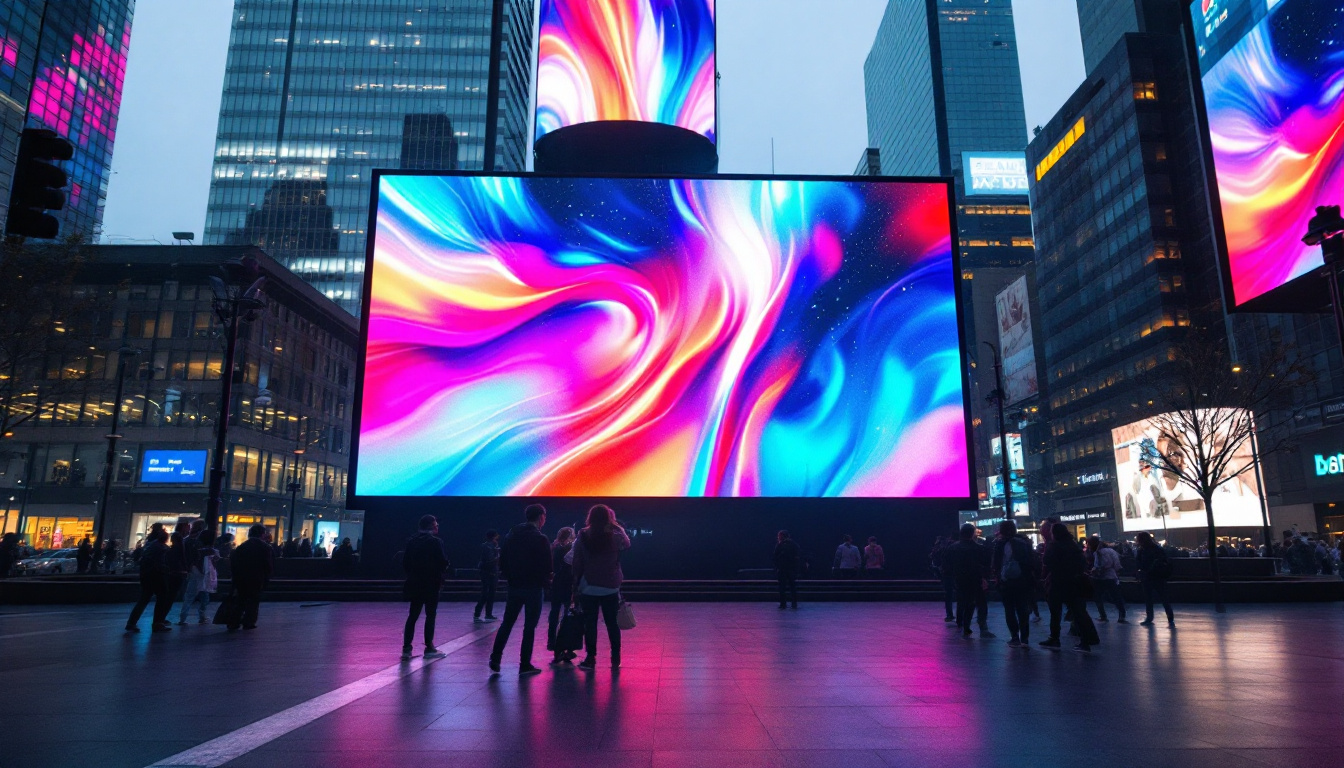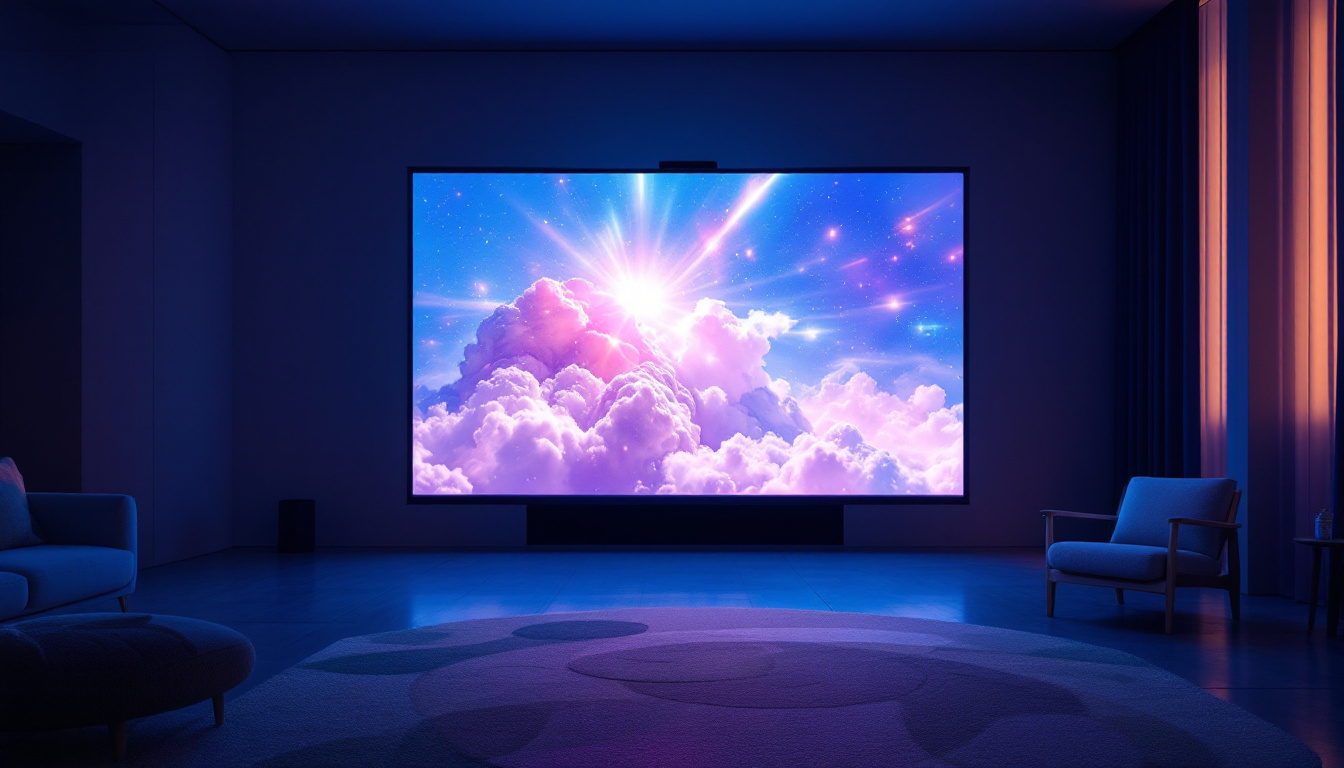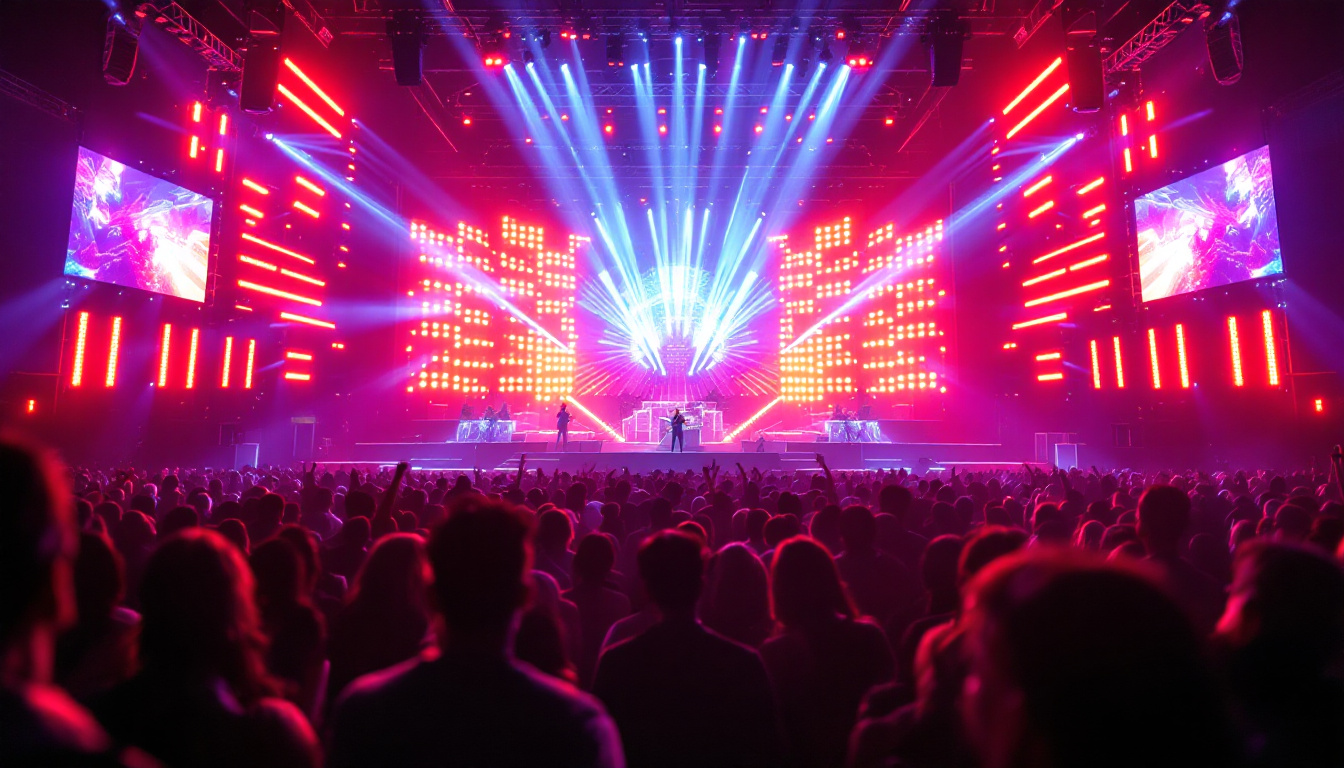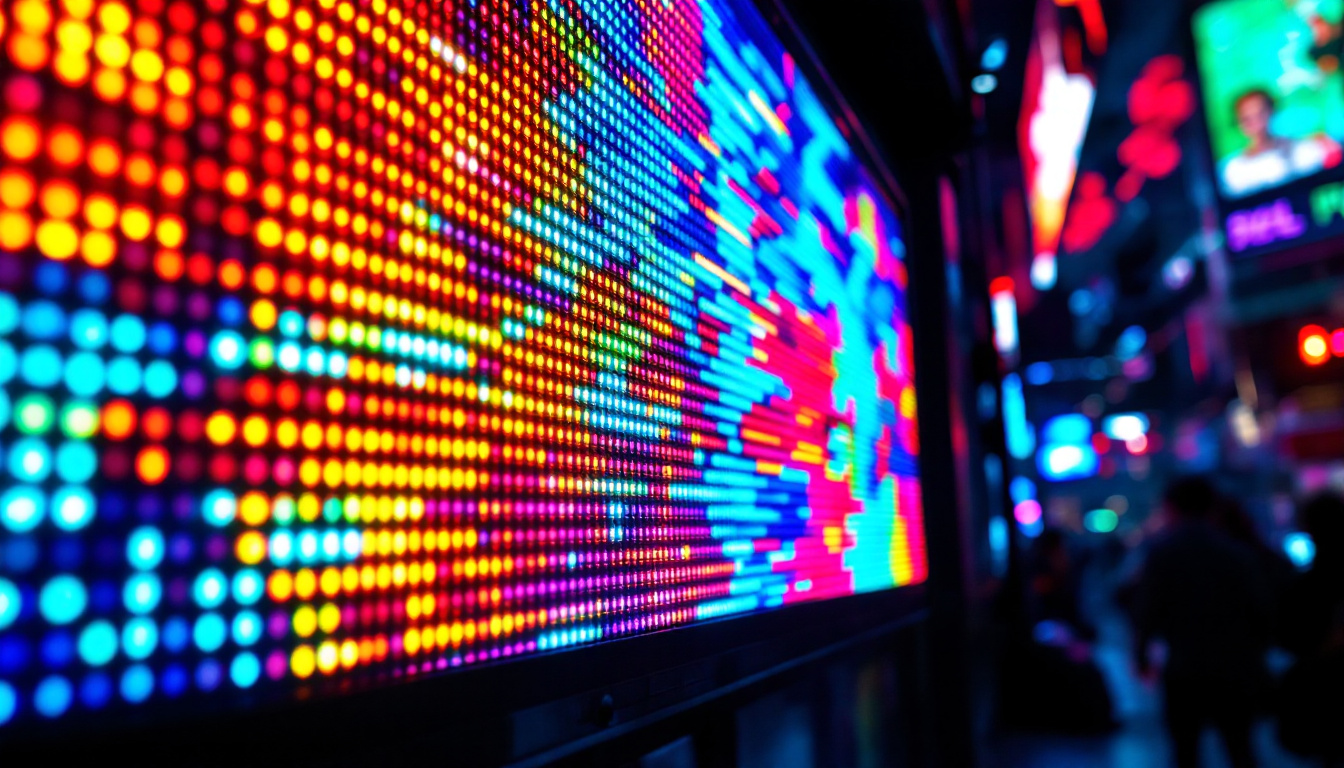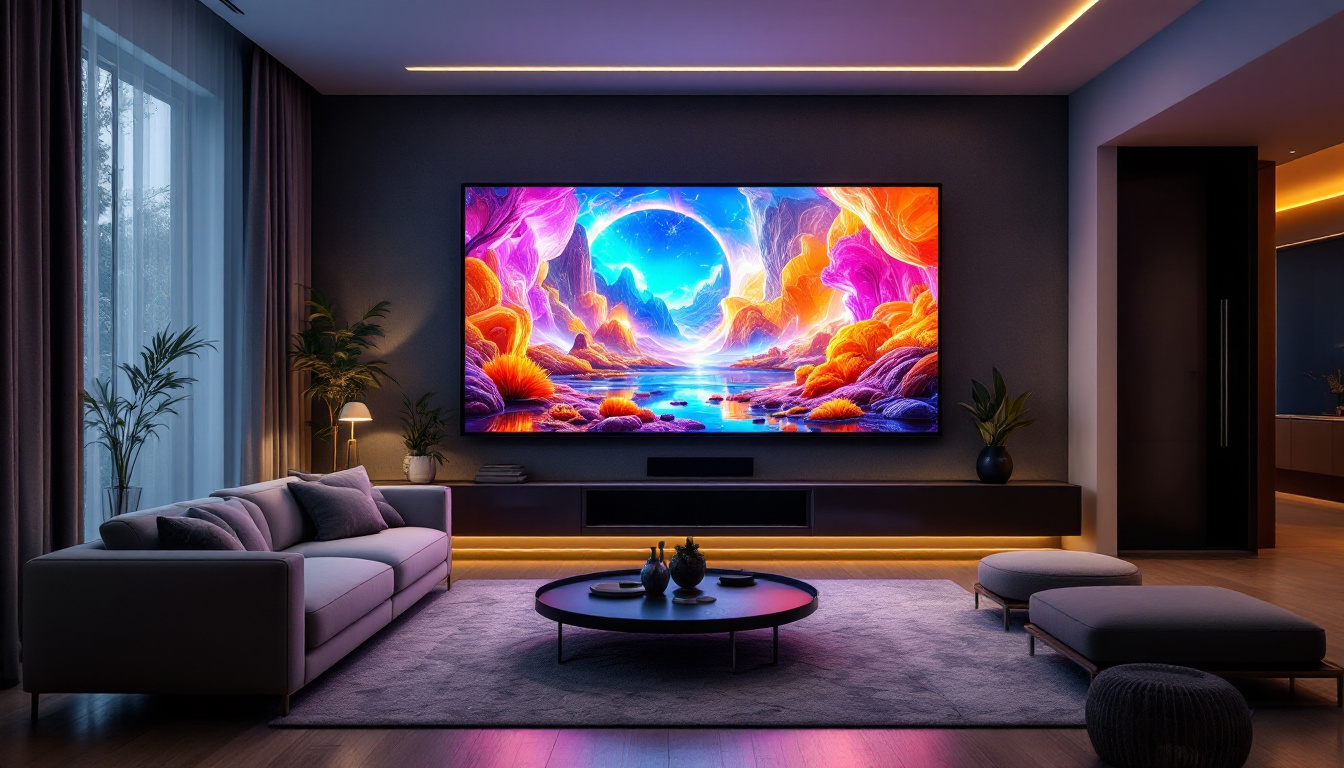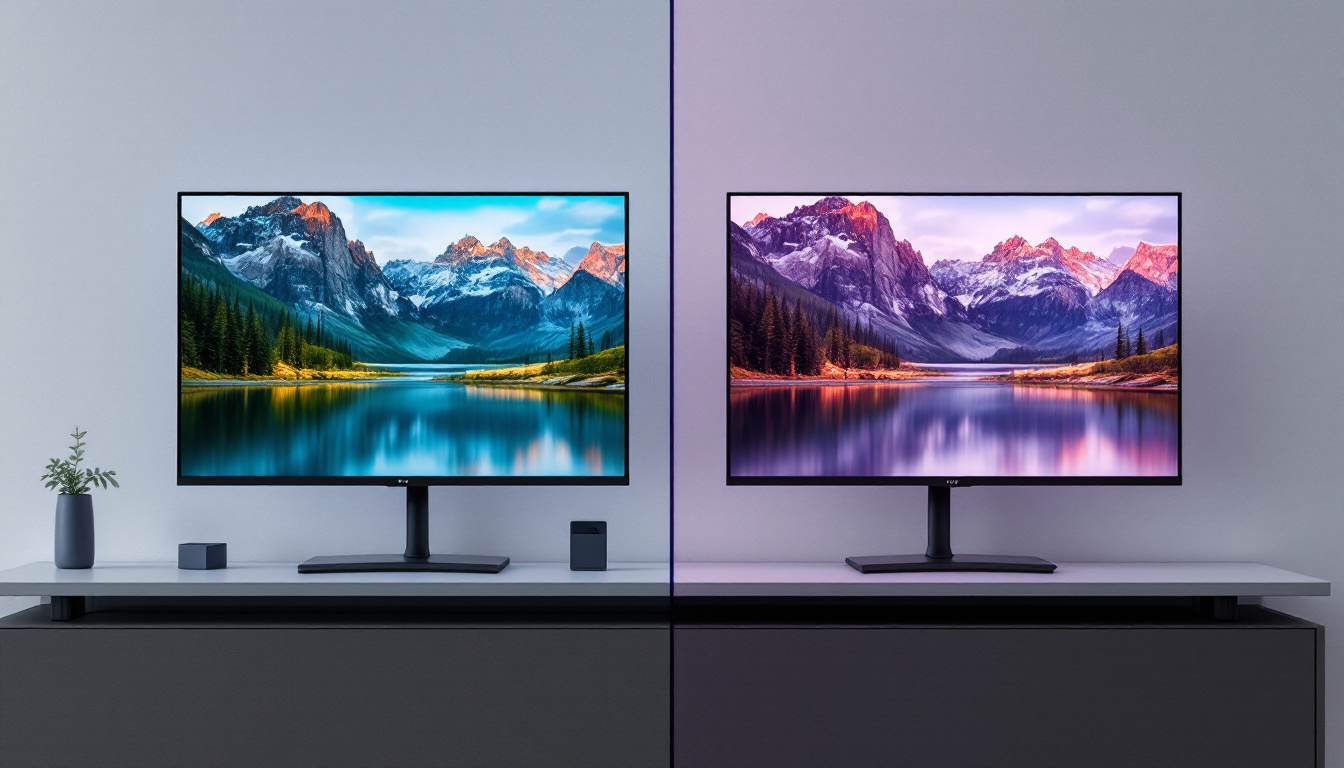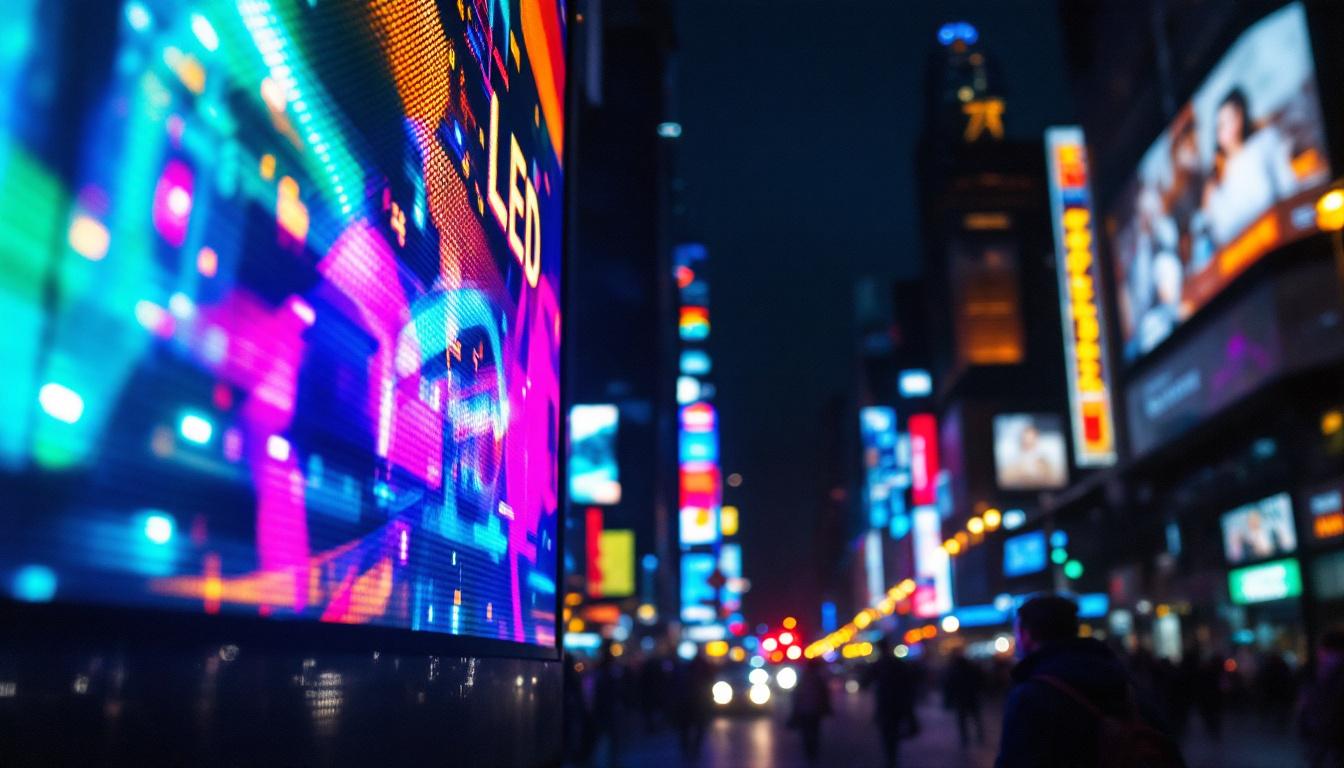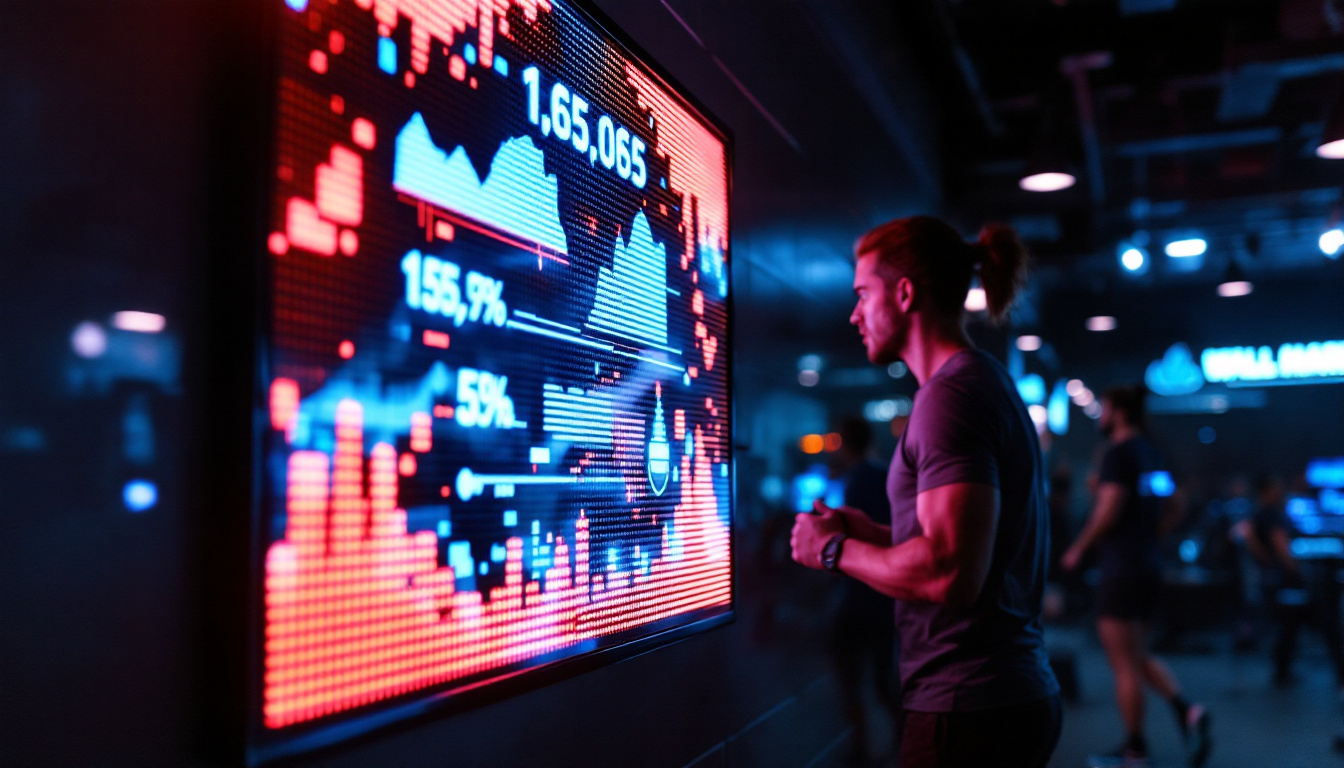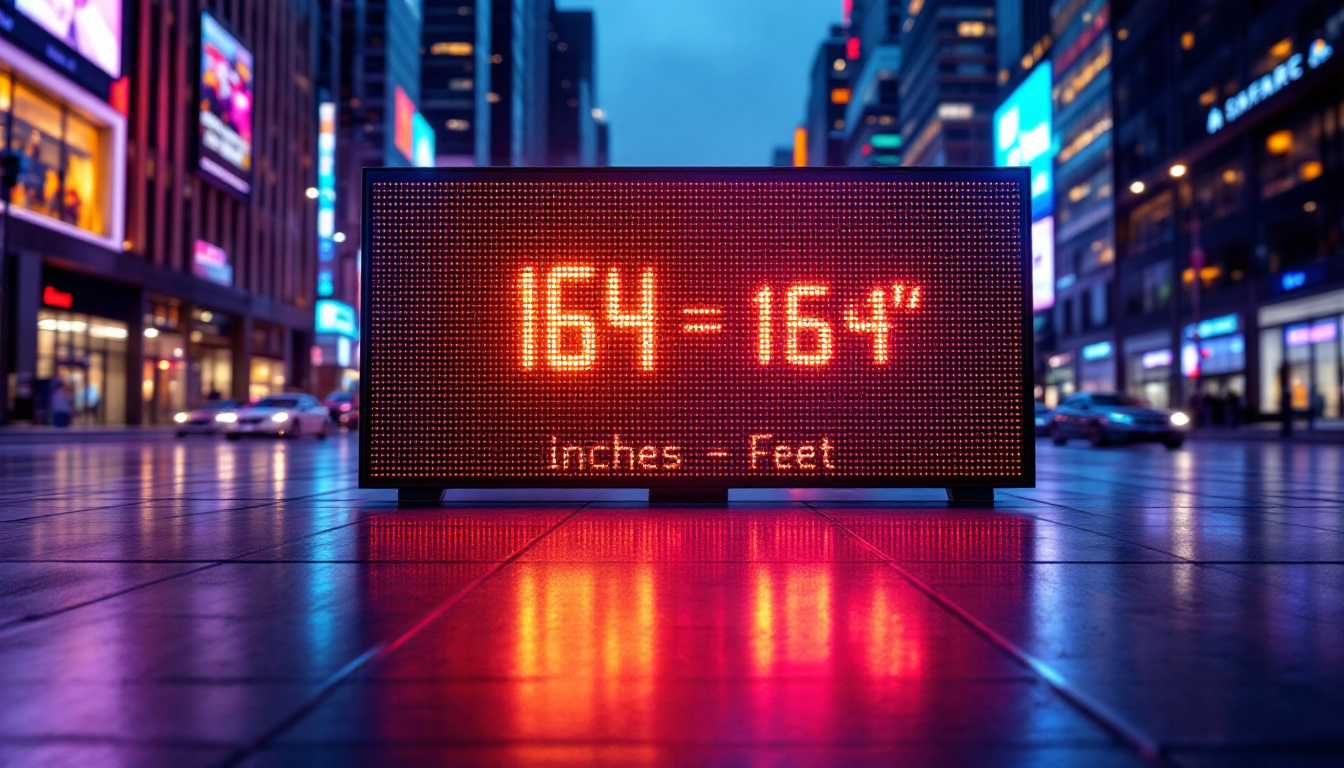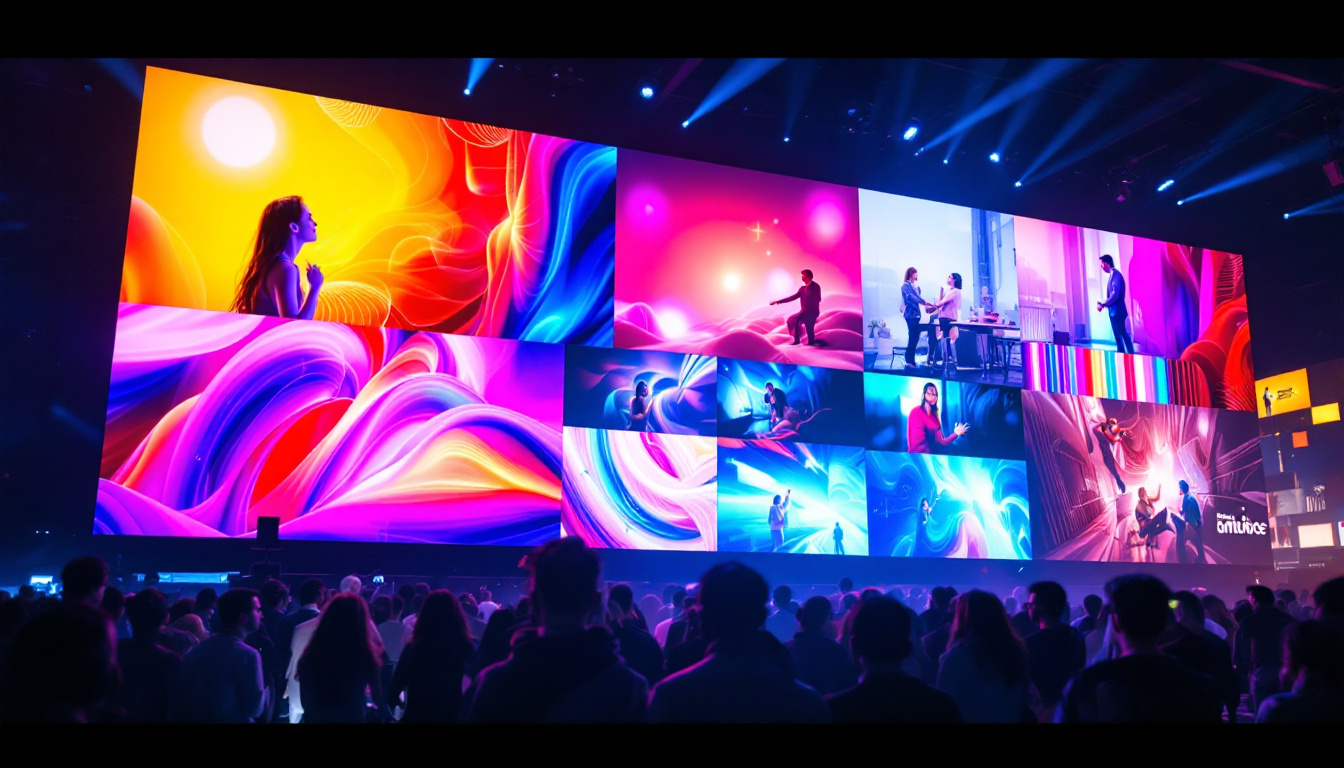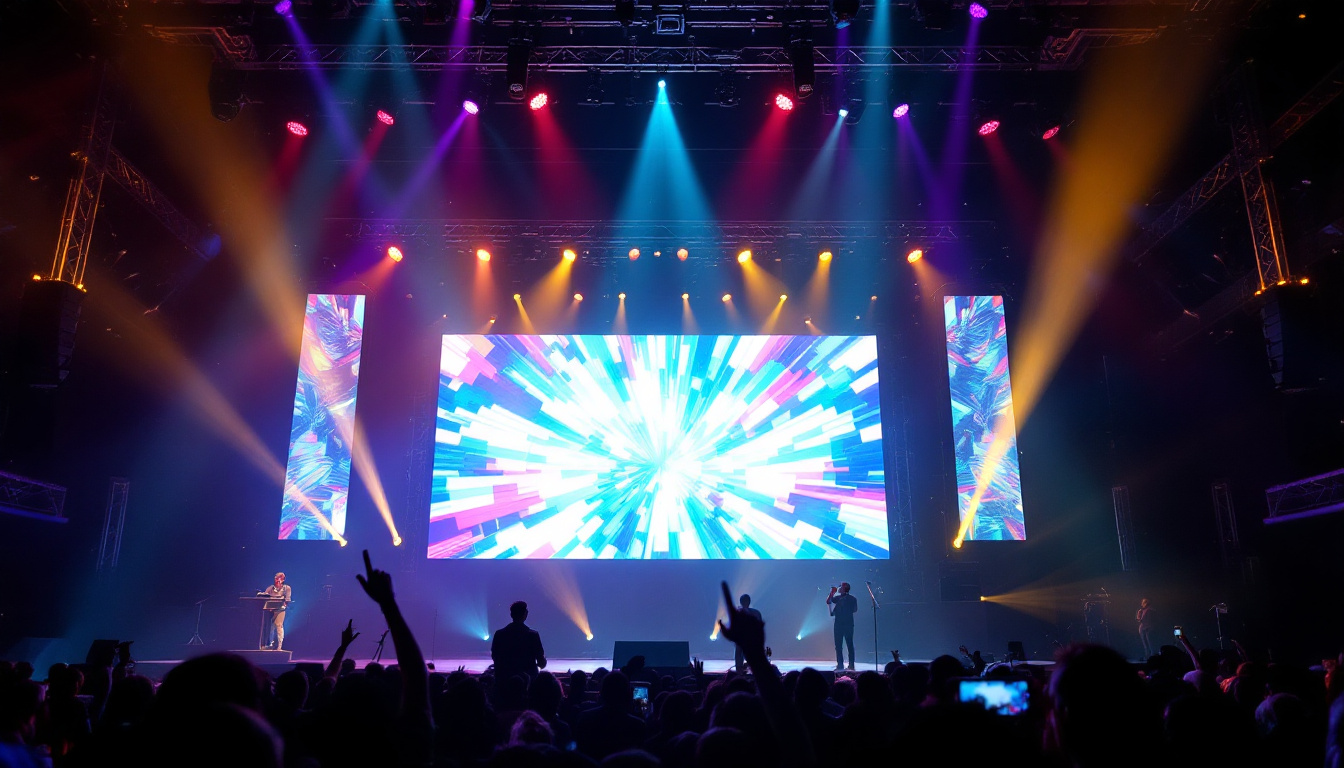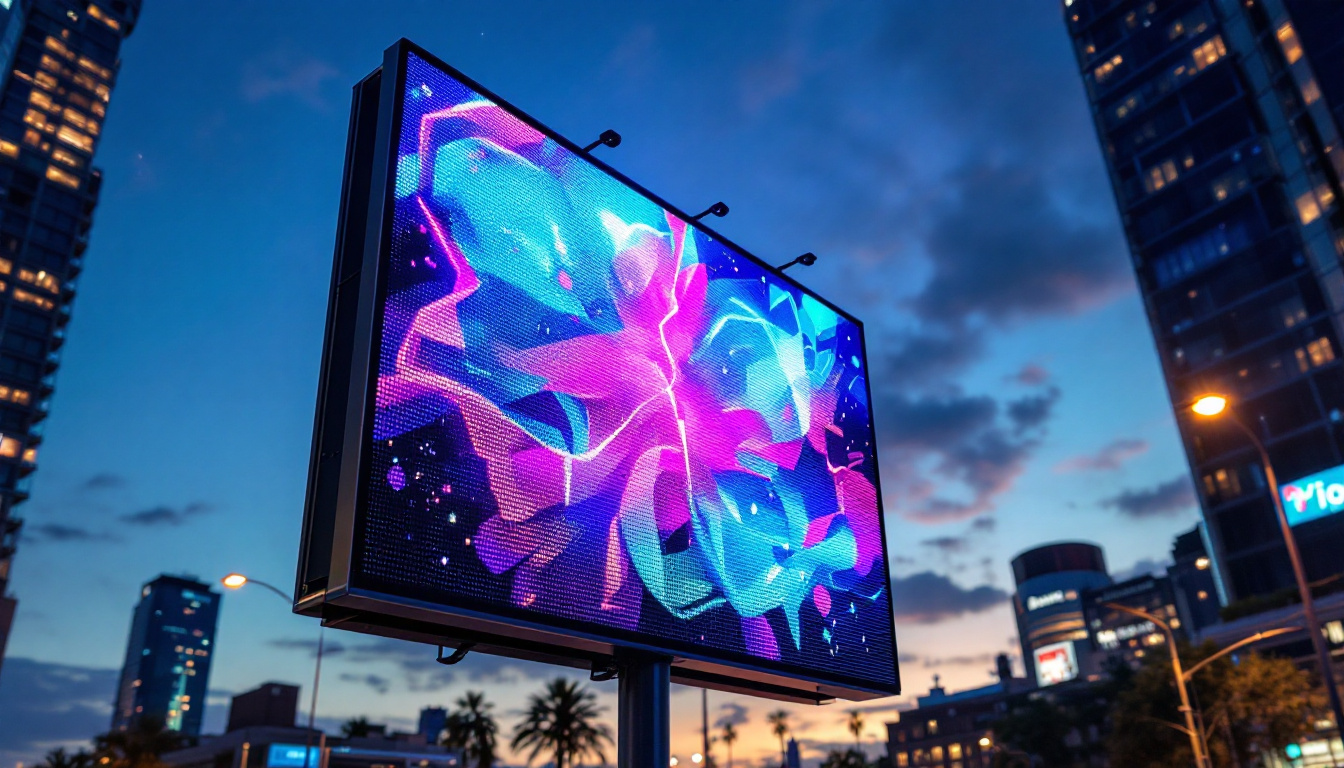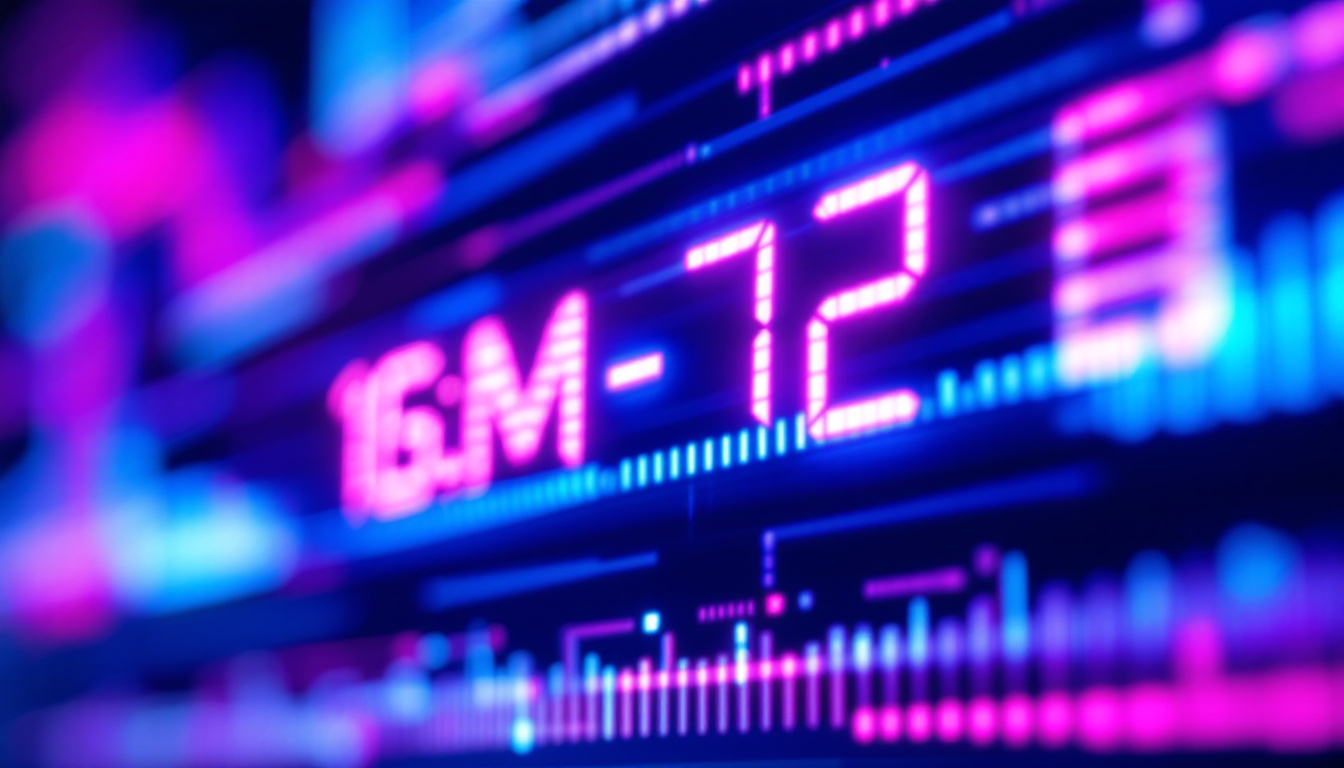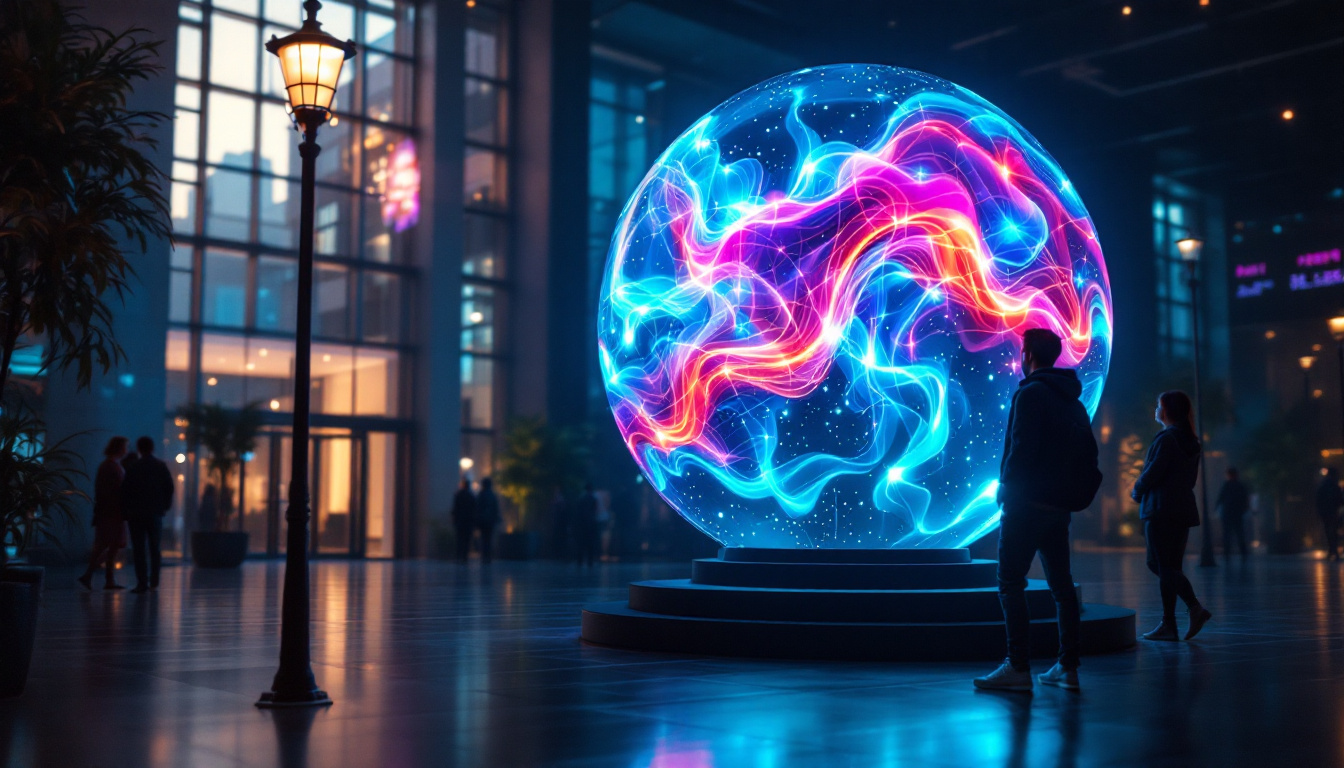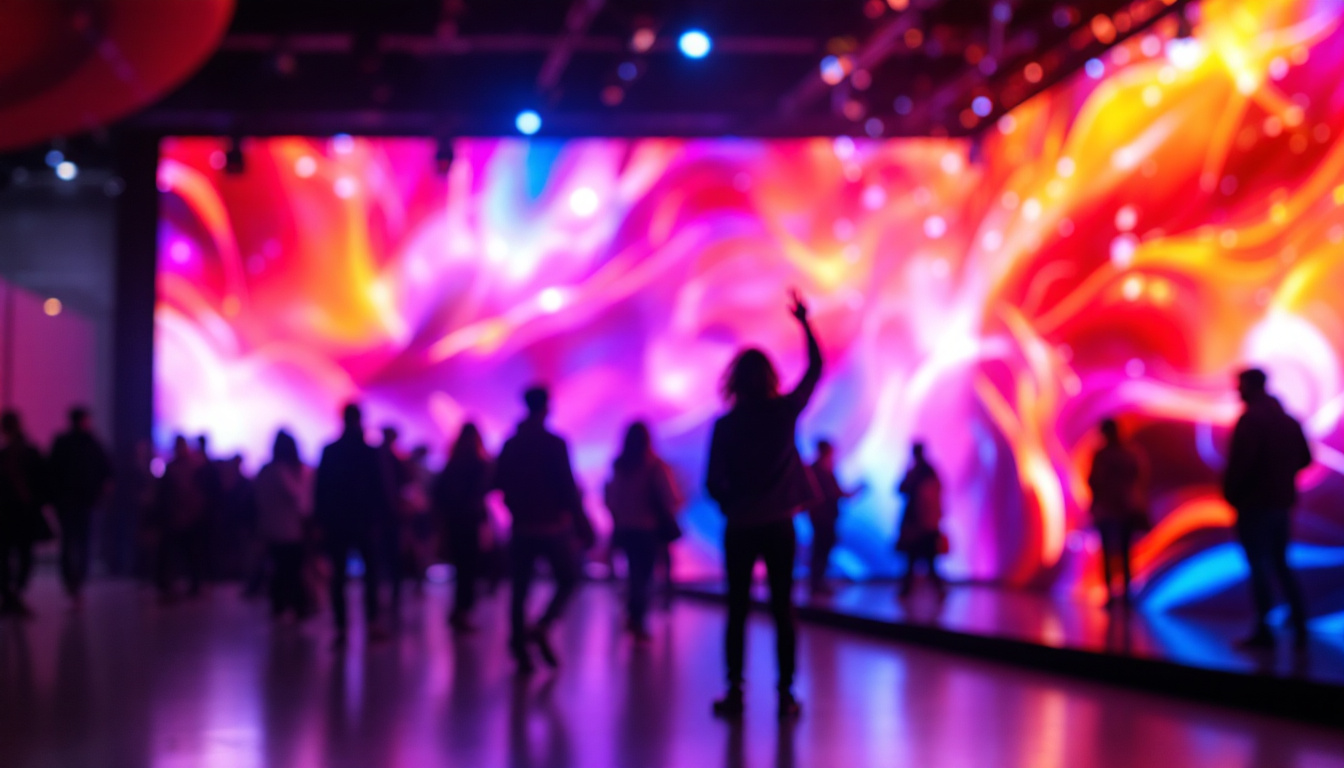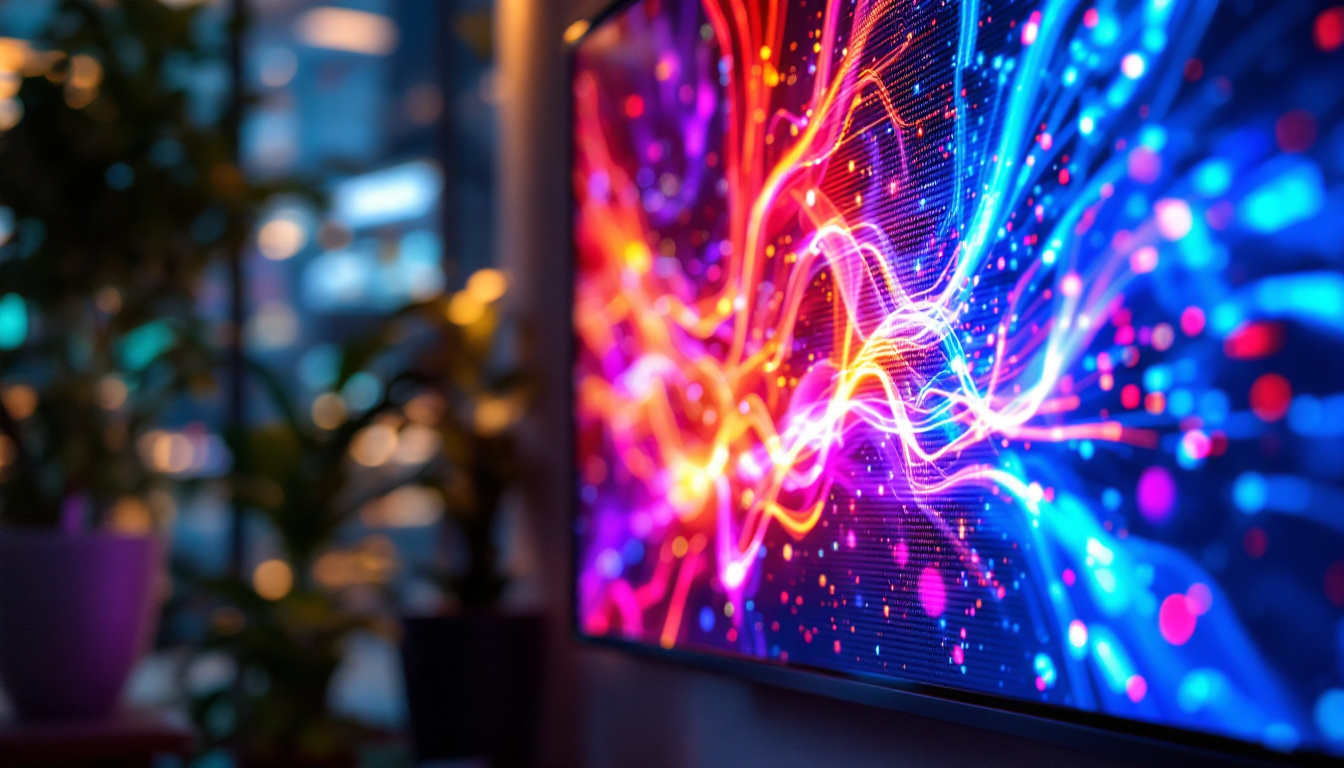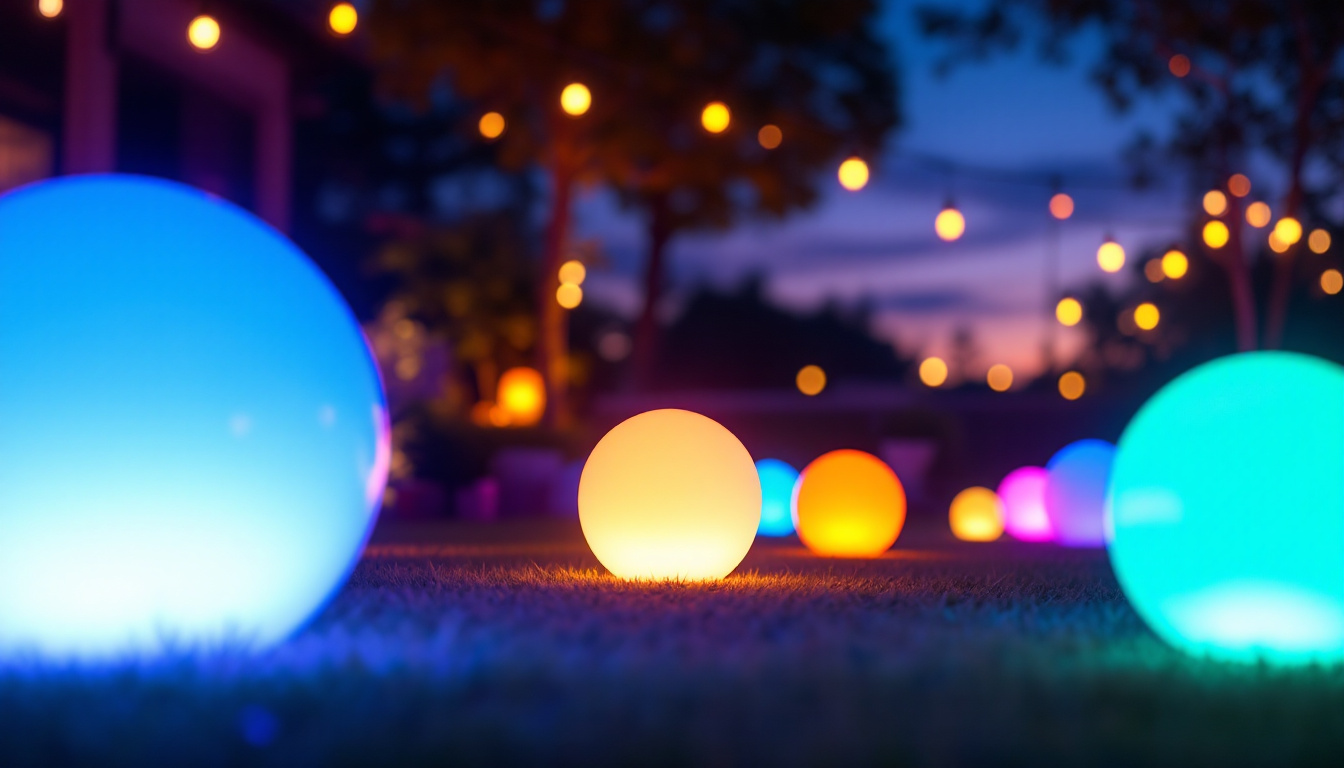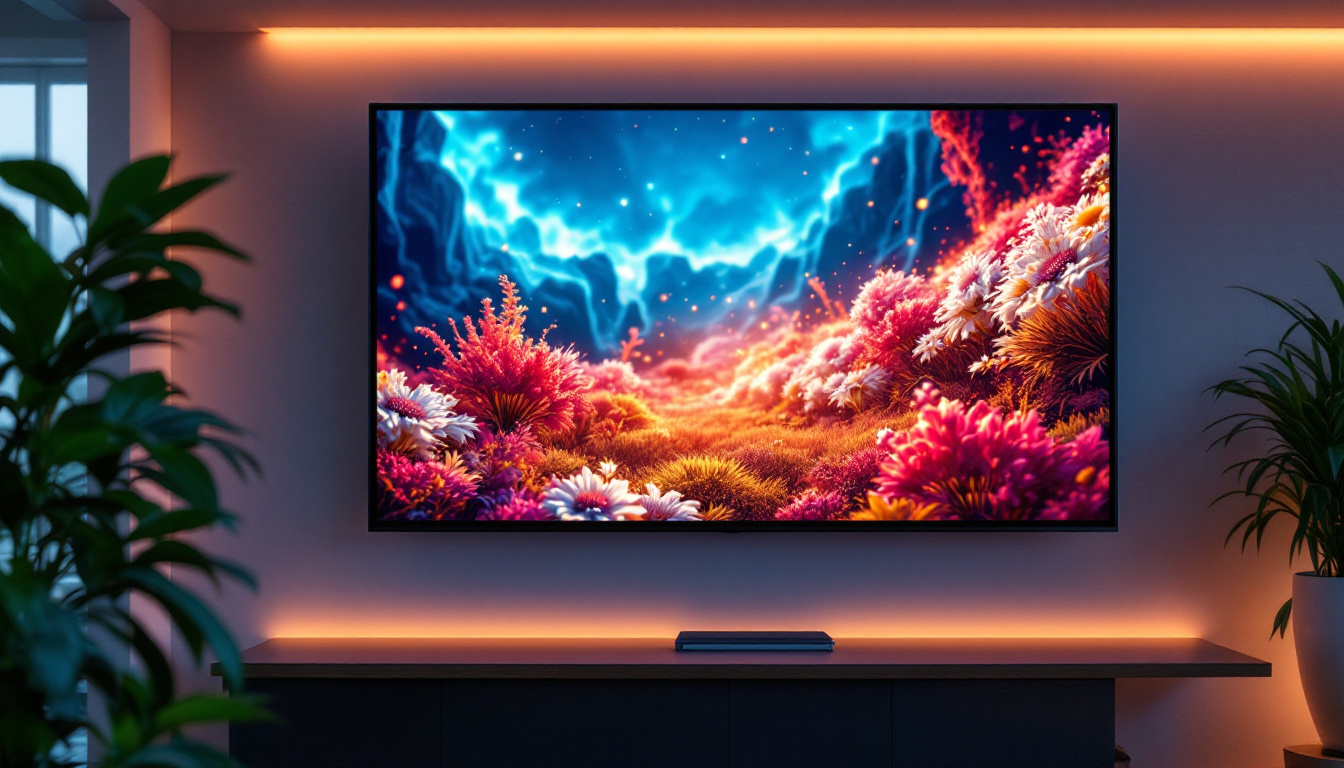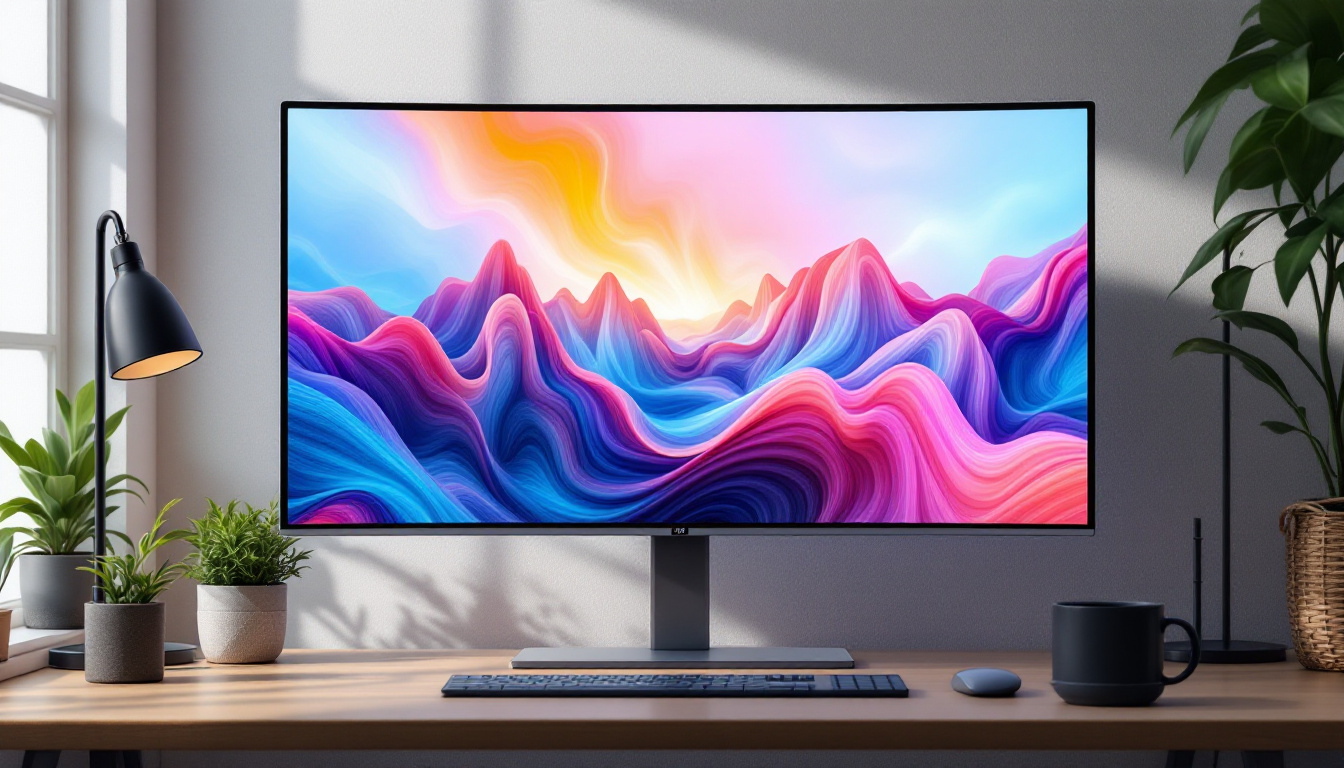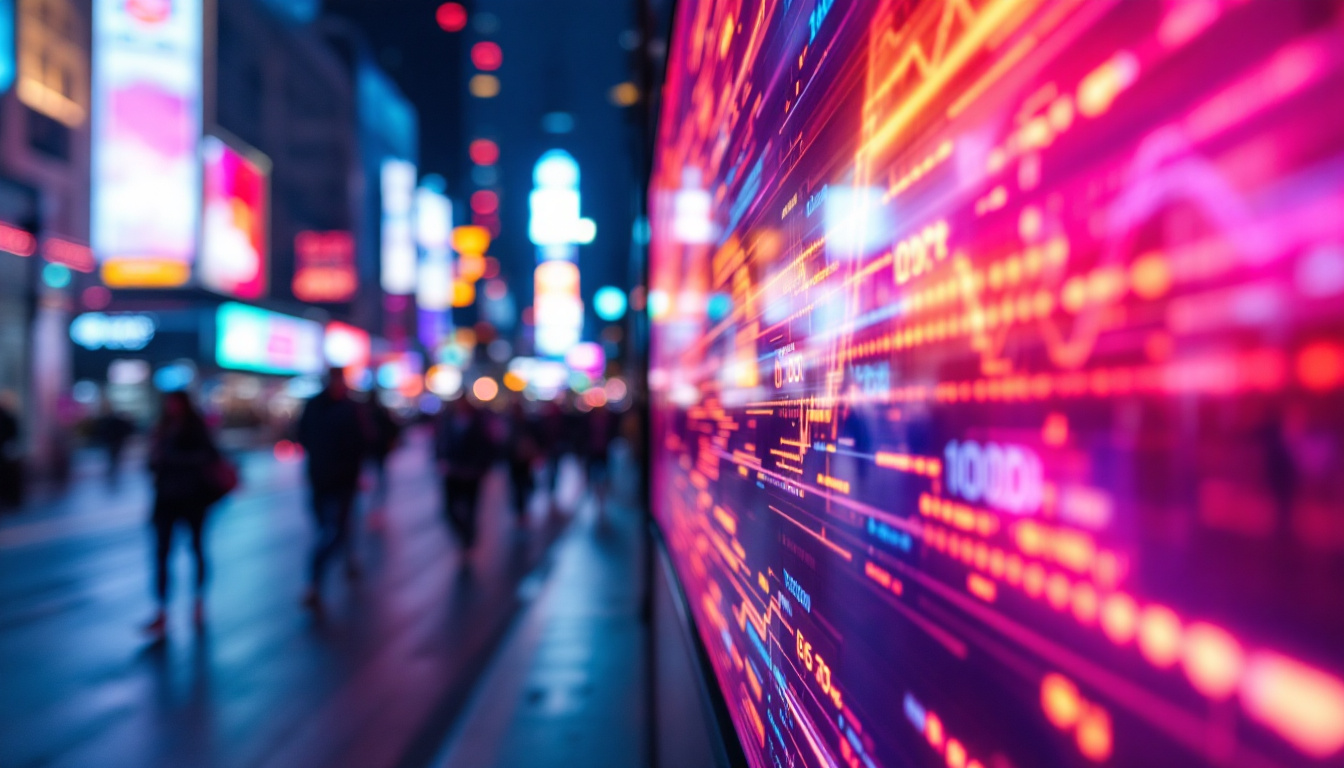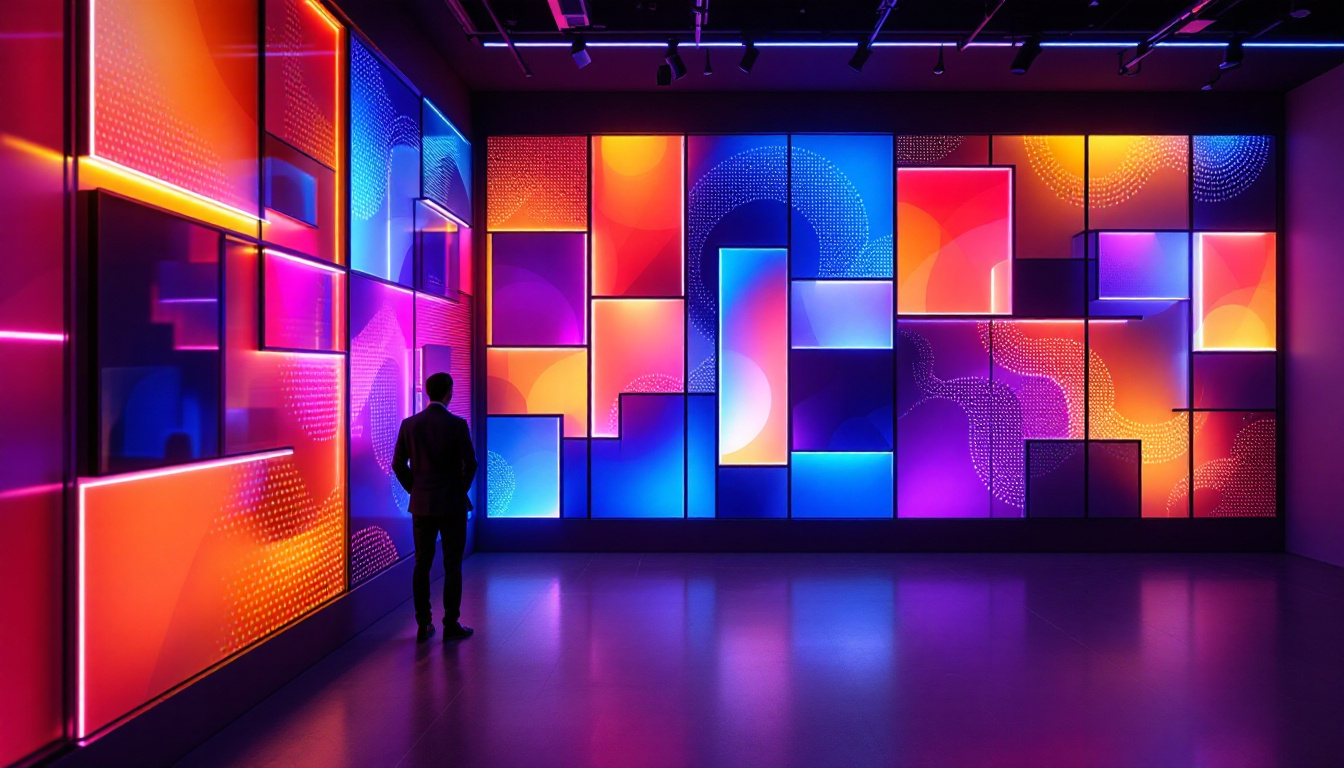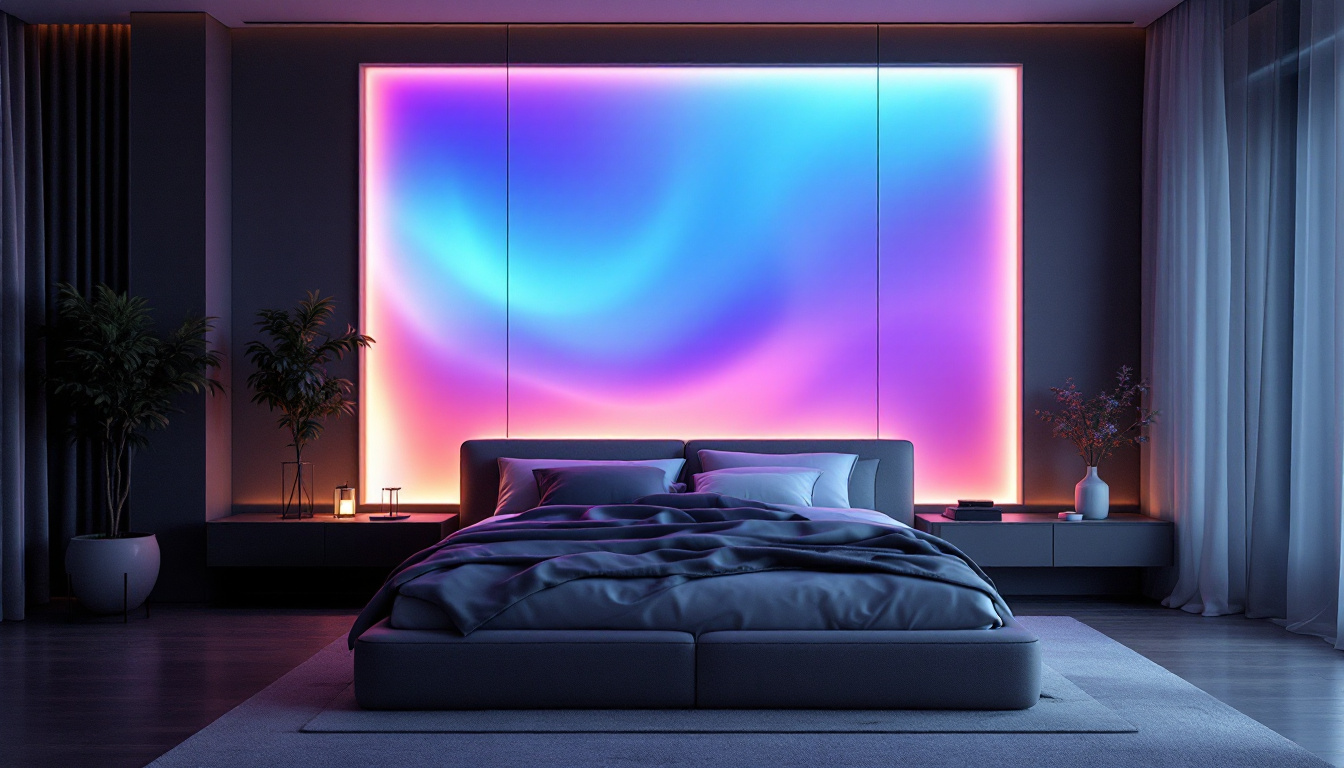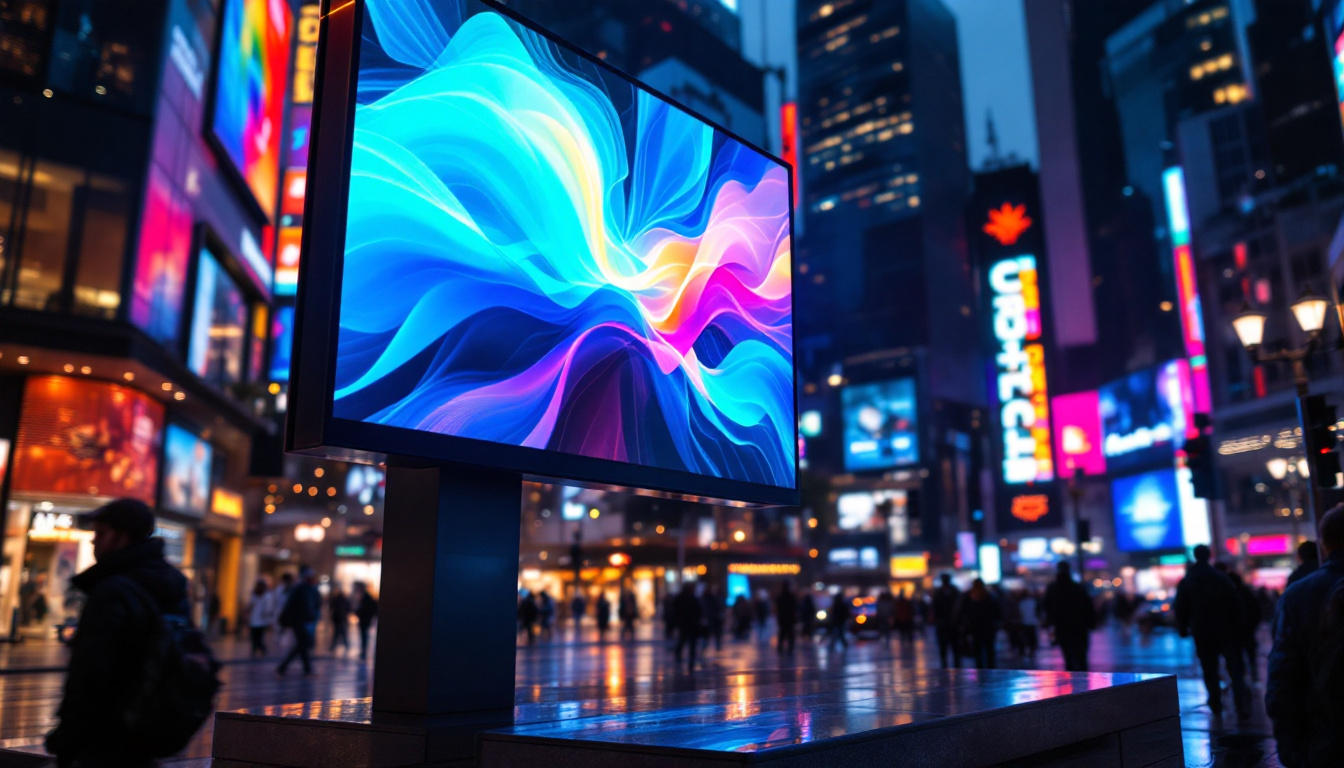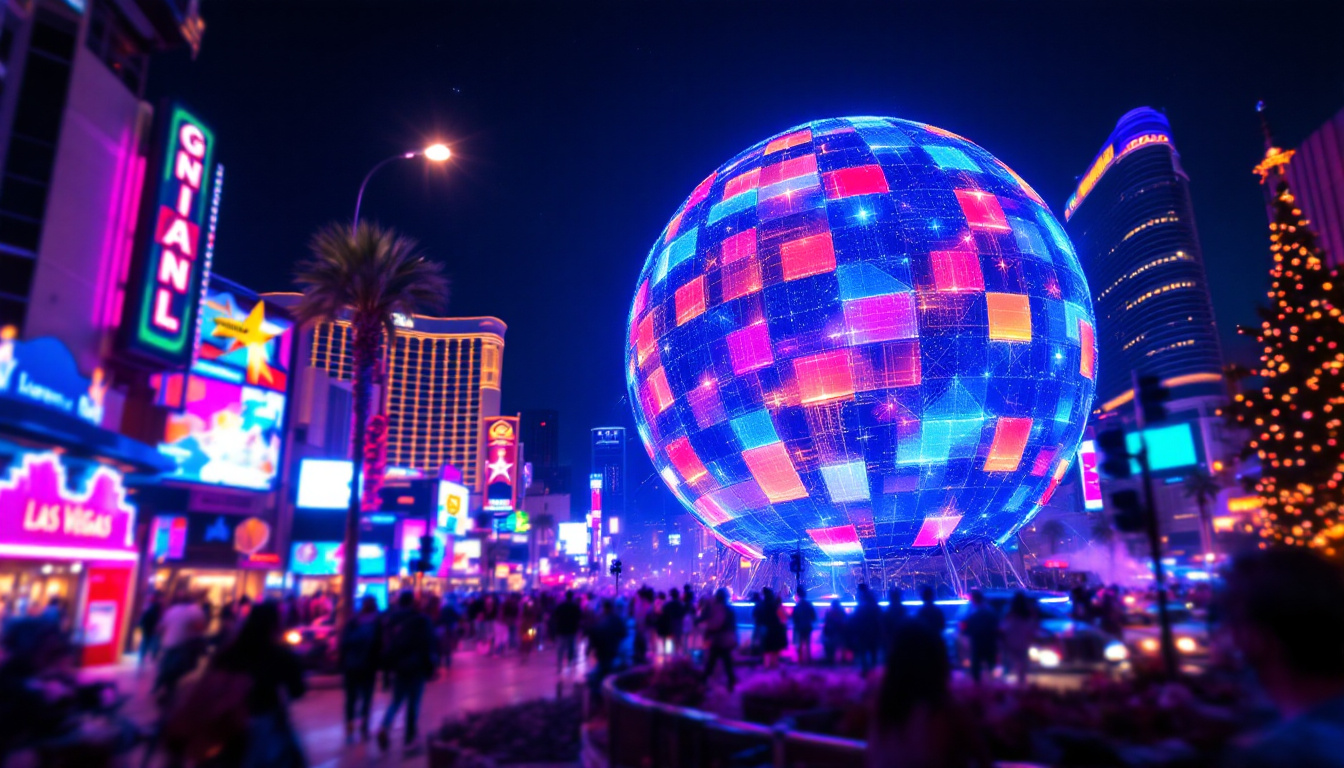In the realm of modern technology, LED displays have emerged as a cornerstone in visual communication. From large-scale billboards to smaller screens in retail environments, the impact of LED technology is undeniable. This article delves into the intricacies of LED displays, exploring their functionality, applications, and the innovations that continue to shape this dynamic field.
Understanding LED Technology
Light Emitting Diodes (LEDs) are semiconductor devices that emit light when an electric current passes through them. This fundamental principle is what makes LED displays so efficient and versatile. Unlike traditional lighting sources, LEDs are compact, energy-efficient, and have a long lifespan, making them ideal for a variety of applications. Their ability to maintain performance over time without significant degradation makes them a preferred choice for both commercial and residential lighting solutions.
The Science Behind LEDs
The operation of an LED is based on electroluminescence, a phenomenon where a material emits light in response to an electric current. When electrons recombine with holes in the semiconductor, energy is released in the form of photons, creating visible light. The color of the light emitted depends on the materials used in the semiconductor, which can be adjusted to produce a wide spectrum of colors. This versatility allows for the creation of vibrant displays that can be tailored to specific aesthetic or functional requirements, making LEDs suitable for everything from decorative lighting to functional indicators in electronic devices.
One of the key advantages of LED technology is its efficiency. LEDs consume significantly less power compared to traditional incandescent or fluorescent bulbs, leading to lower energy costs and a reduced environmental impact. This efficiency is particularly beneficial in applications where displays are required to operate continuously, such as in advertising and public information systems. Furthermore, the durability of LEDs means they are less likely to break or fail, reducing maintenance costs and the frequency of replacements, which is especially advantageous in high-traffic areas or installations that are difficult to access.
Types of LED Displays
LED displays come in various formats, each tailored for specific applications. The most common types include:
- Direct View LED Displays: These displays consist of individual LED modules that create images by directly emitting light. They are often used in large outdoor billboards and stadium screens, where high brightness and visibility are crucial for capturing the attention of passersby.
- LED Backlit Displays: These displays utilize LEDs to illuminate an LCD panel from behind, enhancing brightness and color accuracy. They are commonly found in televisions and computer monitors, providing a thinner profile and improved energy efficiency compared to traditional backlighting methods.
- Organic LED (OLED) Displays: Utilizing organic compounds, OLEDs offer superior color reproduction and contrast ratios. They are increasingly popular in smartphones and high-end televisions, allowing for deeper blacks and a wider viewing angle, which enhances the overall viewing experience.
In addition to these common types, there are also specialized LED displays designed for unique applications. For instance, transparent LED displays are gaining traction in retail environments, allowing for eye-catching advertisements while maintaining visibility of the products behind them. Similarly, flexible LED displays are being developed for use in innovative designs, such as curved screens or wearable technology, pushing the boundaries of how we interact with visual information. As technology continues to advance, the potential applications for LED displays are virtually limitless, paving the way for even more creative and functional uses in everyday life.
Applications of LED Displays
LED displays have revolutionized various industries by offering dynamic and engaging visual content. Their versatility allows for a wide range of applications, each benefiting from the unique properties of LED technology.
Advertising and Marketing
One of the most prominent uses of LED displays is in advertising. Digital billboards and signage have transformed the way brands communicate with consumers. The ability to change content in real-time allows businesses to tailor their messages based on time of day, audience demographics, or current events.
Moreover, the brightness and clarity of LED displays ensure that advertisements are visible even in direct sunlight, making them highly effective for outdoor marketing campaigns. Interactive LED displays also engage consumers, providing immersive experiences that traditional static signs cannot match.
Entertainment and Events
In the entertainment industry, LED displays play a crucial role in enhancing visual experiences. Concerts, festivals, and sporting events utilize large LED screens to broadcast performances and highlight key moments. These displays can create stunning visual effects, captivating audiences and elevating the overall experience.
Additionally, LED technology is increasingly used in stage productions and theatrical performances, where dynamic lighting and visuals are essential for storytelling. The flexibility of LED displays allows for creative designs that can adapt to various themes and settings.
Public Information Systems
LED displays are also widely used in public information systems, such as transportation hubs and municipal buildings. digital signage provides real-time updates on schedules, directions, and important announcements, ensuring that the public remains informed.
For example, LED screens at airports display flight information, while electronic billboards along highways provide traffic updates. The ability to update this information instantly is invaluable in maintaining efficient communication in fast-paced environments.
Advantages of LED Displays
The growing popularity of LED displays can be attributed to several key advantages that set them apart from traditional display technologies.
Energy Efficiency
One of the primary benefits of LED displays is their energy efficiency. Compared to traditional lighting technologies, LEDs consume significantly less power, which translates to lower operational costs. This is particularly advantageous for businesses that rely on continuous operation, such as retail stores and advertising agencies.
Furthermore, the reduced energy consumption contributes to a smaller carbon footprint, making LED displays a more sustainable choice for environmentally-conscious organizations.
Longevity and Durability
LED displays are known for their impressive lifespan, often lasting up to 100,000 hours or more. This longevity reduces the frequency of replacements, leading to lower maintenance costs over time. Additionally, LEDs are more durable than traditional bulbs, as they are less susceptible to breakage and can withstand harsh environmental conditions.
This durability makes LED displays ideal for outdoor applications, where exposure to the elements can be a significant concern. Their resilience ensures that they continue to perform reliably, even in challenging environments.
High-Quality Visuals
LED displays offer superior image quality, characterized by vibrant colors and high contrast ratios. This quality is essential for applications where visual impact is critical, such as advertising and entertainment. The ability to produce bright, clear images ensures that content is engaging and easily visible from a distance.
Moreover, advancements in LED technology have led to improvements in pixel density, allowing for higher resolution displays that can showcase intricate details. This capability is particularly important in settings such as art installations and high-definition video presentations.
Challenges and Considerations
While LED displays offer numerous advantages, there are also challenges and considerations that must be addressed when implementing this technology.
Initial Costs
The initial investment for LED displays can be higher than traditional display technologies. The cost of high-quality LED panels and installation can be a barrier for some businesses, particularly small enterprises. However, it is essential to consider the long-term savings associated with energy efficiency and reduced maintenance costs.
Many organizations find that the return on investment justifies the initial expenditure, especially when factoring in the enhanced visibility and engagement that LED displays provide.
Heat Management
LED displays generate heat during operation, which can impact performance and longevity if not properly managed. Effective heat dissipation systems are crucial to maintaining optimal operating temperatures and preventing damage to the display components.
Manufacturers often incorporate cooling systems and ventilation designs to mitigate heat buildup, ensuring that LED displays operate efficiently and reliably over time.
Content Management
Creating and managing content for LED displays requires careful planning and resources. Organizations must invest in content management systems that allow for easy updates and scheduling of display content. This process can be complex, especially for businesses with multiple displays or locations.
To maximize the effectiveness of LED displays, it is essential to develop engaging content that resonates with the target audience. This often involves collaboration between marketing teams, graphic designers, and technical staff to ensure that the visual messaging is cohesive and impactful.
Future Trends in LED Display Technology
The LED display industry is continuously evolving, with innovations that promise to enhance functionality and user experience. Several trends are shaping the future of LED technology.
MicroLED Technology
MicroLED technology represents a significant advancement in display capabilities. By utilizing tiny individual LEDs to create images, MicroLED displays offer exceptional brightness, contrast, and color accuracy. This technology is poised to revolutionize both consumer electronics and large-scale displays.
MicroLED displays can be seamlessly tiled together to create larger screens without visible bezels, allowing for creative installations in various environments. This flexibility opens up new possibilities for immersive experiences in entertainment and advertising.
Flexible and Transparent Displays
Another exciting trend is the development of flexible and transparent LED displays. These displays can be bent or shaped to fit unique applications, such as curved screens in automotive design or transparent displays in retail environments.
Flexible displays offer innovative ways to integrate technology into everyday objects, while transparent displays create opportunities for augmented reality experiences and interactive advertising. As this technology matures, it is likely to transform the way consumers interact with visual content.
Smart Integration
As the Internet of Things (IoT) continues to expand, LED displays are increasingly being integrated with smart technologies. This integration allows for real-time data updates, remote monitoring, and automated content management.
Smart LED displays can adapt to their environment, adjusting brightness based on ambient light levels or displaying content tailored to specific audiences. This level of interactivity enhances user engagement and improves the overall effectiveness of visual communication.
Conclusion
LED displays have transformed the landscape of visual communication, offering unparalleled advantages in energy efficiency, durability, and visual quality. As technology continues to advance, the applications and possibilities for LED displays are expanding, paving the way for innovative solutions across various industries.
Understanding the intricacies of LED technology, its applications, and the challenges involved is essential for organizations looking to leverage this powerful tool. By staying informed about emerging trends and best practices, businesses can harness the full potential of LED displays to enhance their communication strategies and engage their audiences effectively.
As the industry evolves, the future of LED displays promises to be bright, with exciting innovations that will continue to shape the way we experience visual content.
Explore Cutting-Edge LED Display Solutions with LumenMatrix
Ready to elevate your visual communication strategy with the latest in LED display technology? LumenMatrix is at the forefront of innovation, offering a diverse range of LED display modules designed to captivate and engage your audience. From Indoor and Outdoor LED Wall Displays to specialized solutions like Vehicle LED Displays, LED Sports Displays, and even Custom LED configurations, we have the tools to bring your brand to life. Discover how our All-in-One and Transparent LED Displays can transform your space and deliver your message with unparalleled clarity. Check out LumenMatrix LED Display Solutions and join the revolution in digital signage.

